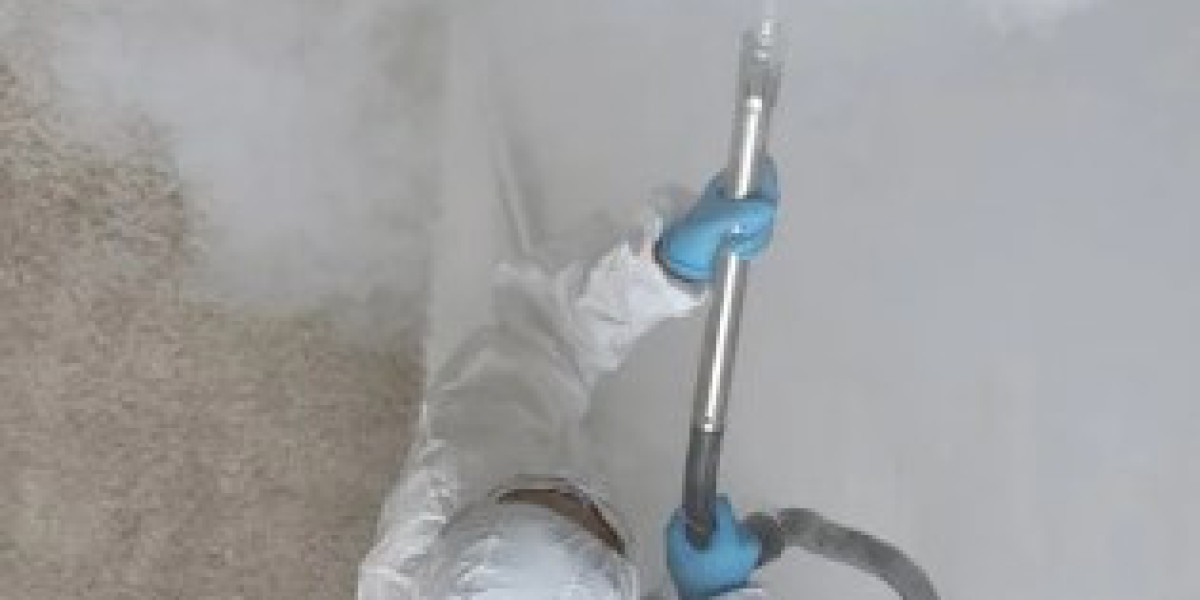What Causes Attic Mold?
Before diving into mold removal, it's important to understand the root causes of attic mold growth. Mold requires moisture to grow, and the most common sources of moisture in the attic include:
- Roof Leaks: Even a small roof leak can introduce moisture into your attic, providing the perfect breeding ground for mold.
- Poor Ventilation: Attics need proper ventilation to prevent the buildup of moisture. Without adequate airflow, warm, moist air becomes trapped, leading to condensation and mold growth.
- Improper Insulation: Incorrect insulation can cause temperature fluctuations that lead to condensation on cold surfaces, contributing to mold development.
- Plumbing Leaks: If pipes run through your attic and they leak, it can lead to mold growth.
- Appliance Venting Issues: Exhaust fans and appliances like dryers that vent into the attic instead of outside can introduce moisture into the space.
Signs You Have Mold in Your Attic
Identifying mold early can prevent costly repairs and potential health risks. Some of the key signs that you have mold in your attic include:
- Discolored or Stained Wood: Black, white, green, or brown patches on wooden beams are often an indication of mold.
- Musty Odor: Mold produces a distinctive musty smell. If you notice this odor in or around your attic, mold is likely present.
- Peeling Paint or Wallpaper: Moisture buildup in your attic can seep into the walls of your home, causing paint or wallpaper to peel.
- Increased Allergy Symptoms: If you or your family are experiencing allergy-like symptoms—such as sneezing, coughing, or itchy eyes—it could be caused by mold spores in the air.
Types of Mold Commonly Found in Attics
There are different types of mold that can grow in your attic, and understanding the specific type can help you choose the most effective removal method. Some common types include:
- Aspergillus: A type of mold often found in damp, warm environments. While generally not harmful, it can cause respiratory problems for those with weakened immune systems.
- Cladosporium: This mold can thrive in both cool and warm environments. It appears in black, green, or brown patches and can cause allergic reactions.
- Stachybotrys (Black Mold): The most dangerous form of attic mold, Stachybotrys can produce toxic spores that lead to serious health issues like chronic fatigue, headaches, and respiratory problems.
Why Mold in the Attic Is a Serious Problem
Mold isn't just an unsightly issue; it can cause long-term damage to both your home and your health if left untreated. Here are a few reasons why you should prioritize mold removal:
- Health Risks: Mold spores can become airborne and circulate throughout your home, causing respiratory issues, allergies, and even asthma. Prolonged exposure to toxic molds like black mold can result in serious health problems.
- Structural Damage: Mold can eat away at wooden beams and rafters, compromising the structural integrity of your home. Over time, this can lead to expensive repairs.
- Energy Efficiency Issues: Mold growth can damage insulation, reducing the energy efficiency of your home and increasing your utility bills.
How to Safely Remove Mold from Your Attic
Once you've identified mold in your attic, it's important to act quickly. Mold removal can be a complex process, and depending on the severity, it may require professional help. Here's a step-by-step guide on how to remove mold safely:
1. Protect Yourself
Before starting the removal process, ensure you're equipped with the right protective gear, including:
- N-95 Respirator Mask: To prevent inhaling mold spores.
- Gloves and Goggles: To protect your skin and eyes from contact with mold.
- Protective Clothing: Wear clothing that covers your skin, and make sure to wash it immediately after the removal process.
2. Identify and Fix the Source of Moisture
Removing mold without addressing the source of moisture will result in mold returning. Identify whether the moisture is coming from a roof leak, poor ventilation, or another source and fix it.
3. Contain the Mold
Isolate the affected area to prevent mold spores from spreading to other parts of your home. Use plastic sheeting and seal it with duct tape.
4. Remove Mold-Infested Materials
Some materials, like insulation or drywall, may need to be removed entirely if they are heavily infested with mold. Dispose of these materials in sealed plastic bags to prevent spore contamination.
5. Clean Moldy Surfaces
For surfaces like wood or metal, you can use a solution of water and detergent. Scrub the area with a stiff brush, then rinse with clean water. For tougher mold stains, use a mixture of water and vinegar or hydrogen peroxide.
6. Apply a Mold Inhibitor
After cleaning, apply a mold inhibitor to prevent future growth. These can be purchased at most hardware stores or online.
7. Dry the Area Completely
Make sure the attic is thoroughly dried after cleaning. Use fans or dehumidifiers to remove excess moisture.
8. Inspect and Monitor
Regularly check the attic to ensure the mold does not return. If mold reappears, it may indicate an ongoing moisture problem that needs to be addressed.
When to Call a Professional Mold Remediation Service
While DIY mold removal is possible for smaller areas, larger infestations may require professional help. Here are some signs it's time to call a mold remediation expert:
- Extensive Mold Growth: If mold covers more than 10 square feet, it’s best to call a professional.
- Structural Damage: If the mold has damaged the structural components of your attic, a professional is needed to assess the extent of the damage.
- Toxic Mold: If you suspect you have toxic mold, such as black mold, it’s important to leave the removal to experts who have the right equipment and training.
How to Prevent Mold Growth in Your Attic
Once you've removed mold from your attic, preventing it from coming back should be your next priority. Here are some tips to help keep your attic mold-free:
- Improve Ventilation: Make sure your attic has proper ventilation to prevent moisture buildup. Ridge vents and soffit vents are common solutions.
- Fix Leaks Immediately: Regularly inspect your roof for leaks and repair them as soon as possible.
- Use a Dehumidifier: If your attic tends to be humid, using a dehumidifier can help reduce moisture levels.
- Ensure Proper Insulation: Correct insulation will prevent condensation from forming in your attic.
Conclusion: Stay Vigilant Against Attic Mold
Attic mold can cause serious damage to your home and health if left unchecked. By understanding the causes of mold, recognizing the signs early, and taking prompt action to remove it, you can keep your attic—and your home—safe. Whether you choose to tackle the mold removal process yourself or hire a professional, it's important to address the issue as soon as you spot it. Afterward, implement preventive measures to ensure your attic remains mold-free for the long term. Remember, the key to keeping mold at bay is moisture control and regular maintenance.






